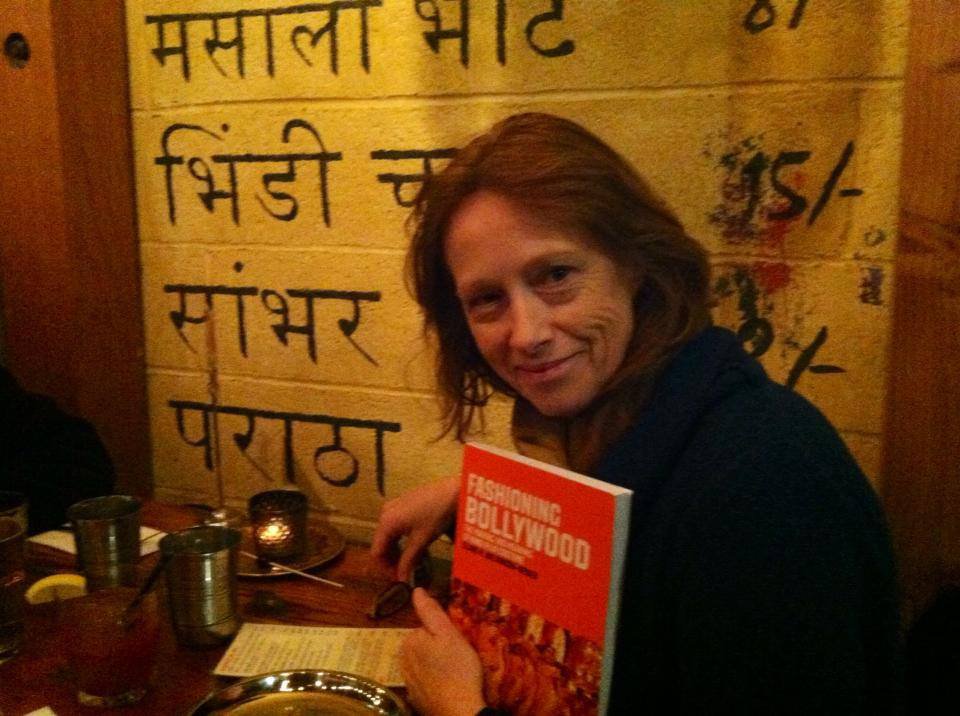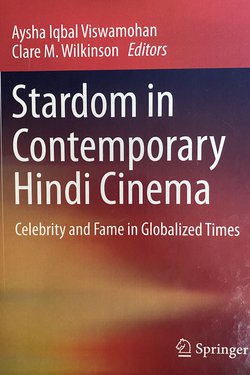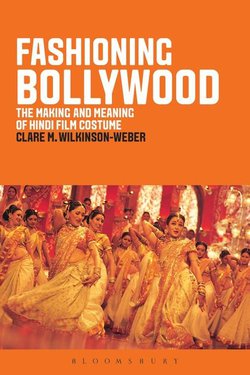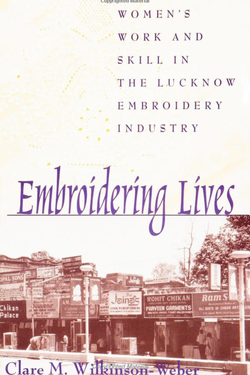
I received a BA in Anthropology from Durham University, England, and a PhD in Anthropology from the University of Pennsylvania. My first book, Embroidering Lives: Women’s Work and Skill in the Lucknow Embroidery Industry, was published by SUNY Press in 1999, and my second book, Fashioning Bollywood: The Making and Meaning of Costumes in the Hindi Film Industry, was published by Bloomsbury Academic Press (formerly Berg Press) in 2014. A third book, Critical Craft: Technology, Globalization and Capitalism, co-edited with Alicia O. DeNicola, came out in 2016 (Routledge) and Stardom in Contemporary Hindi Cinema: Celebrity and Fame in Globalised Times, co-edited with Aysha Iqbal Vishwamohan, appeared in 2020 (Springer). My articles on craft, film costume and the social transformation of costume production in popular Hindi film have appeared in Bioscope, Ethnology, Visual Anthropology Review, Anthropological Quarterly, Ethnography, Journal of Material Culture and Film, Fashion and Consumption. My work has also appeared in Fashion Cultures Revisited, edited by Stella Bruzzi and Pamela Church Gibson, A World of Work (an essay co-written with Hindi film costume designer, Lovleen Bains) edited by Ilana Gershon, Performance Costume: New Perspectives and Methods, edited by Sofia Pantouvaki and Peter McNeil and A Companion to Indian Cinema, edited by Ranjani Mazumdar and Neepa Majumdar with a chapter co-authored with Alicia DeNicola forthcoming in Creative Economies of Culture in South Asia, edited by Anna Morcom and Neelam Raina. My book on Hindi film production design is forthcoming.
I have given several talks in India at JNU, IIT Madras, and SNDT Women's University; I have also been visiting scholar at the University of Westminster.
At WSU Vancouver I regularly teach classes on the Arts and Media in Global Perspective, History of Anthropological Theory, and Speech, Thought and Culture. I also teach the graduate core course on the Fundamentals of Cultural Anthropology and a course on craft and material culture. I have an abiding interest in both the sciences and the humanities, and how they contribute to anthropology. A background in performing arts has proved very helpful in my research, although I have had regrettably (or happily, depending upon your perspective) few opportunities to put it into practice. I am an Associate of the London College of Music.
My research has consistently wheeled back to some core concerns: the human imagination at work in the production of material culture; a critical perspective upon craft; and the day to day work of people making objects and media. Most of my work has been done in India, where I have been studying the social processes of film production, with special focus on the use of commodities in media industries, the cultures of workplaces, the making of film costume, fashion and performance in film, and the renegotiation of craft in the contemporary global economy.
Throughout my career I have been concerned with how artists and makers in craft and media industries manage to assert their creative intelligence in less than ideal circumstances. Both the culture of production -- or the social networks and relationships that make up an art world -- and the shifts in knowledge and skill that underlie aesthetic expression are of interest to me. I have collaborated with fellow anthropologist Alicia DeNicola (of Oxford College of Emory University) in the editing of a book theorizing craft in anthropology. Our key contention is that we can learn the most about craft by looking at when the term is invoked rather than worrying about what it actually means. It is no accident then that I'm interested in exploring craft within film production in both North America and India, since here we see extraordinary feats of imagination and execution without the familiar associations of heritage and the anti-industrial. Behind the scenes featurettes and articles have boosted popular knowledge about "making" in films. At the same time, however, the day to day decision-making, negotiation, and use of imaginative and problem-solving skills to make fantastic, functional and often unprecedented "things" still seems to escape public knowledge.
My PhD supervisions have focused on identity, craft and labor, media production, dress and modernity. My student Whittaker Harpel successfully defended his PhD in 2018 on "Strangers in a Stranger Land: Living History and Tradition in the lives of Arab-Americans," and Chancy Gatlin Anderson did the same in 2023 with a dissertation titled "Japan's Marshmallow World: The community effervescence and fashion of plus-size women in Japan." Other students are working on soap opera production in Bombay, dress and identity among Indian immigrants and residents in the US, and modeling in India as labor.




| Request PDF |
Wilkinson, Clare M 2024. “The house in that film is very real”: aging and verisimilitude in Hindi film set construction. Journal of Cinema and Media Studies, 5.
Enter your email address to request a pdf of this article. |
| -- |
Wilkinson, Clare M 2023. Absences and Erasures: Re-viewing Firaaq. Studies in South Asian Film and Media, 14.
Enter your email address to request a pdf of this article. |
| -- |
Wilkinson, Clare M 2022. Shifty outfits: Dressing Villains in Hindi Films. Wiley-Blackwell, 103-121.
Enter your email address to request a pdf of this article. |
| -- |
Wilkinson, Clare M 2021. Power Dressing: the sari in Sujoy Ghosh's Kahaani. Film, Fashion and Consumption, 10,1, 251-263.
Enter your email address to request a pdf of this article. |
| -- |
Wilkinson, Clare M 2018. Wrinkles in Time: Ageing Costume in Hindi Film. Bioscope, 9(1), 46-72.
Enter your email address to request a pdf of this article. |
| -- |
Narayanan, Pavithra and Wilkinson, Clare M 2016. Urban Dreams: Sudhir Mishra’s Representations of Social and Political Change, In Behind the Scenes Contemporary Bollywood Directors and Their Cinema. Aysha Iqbal Vishwamohan and Vimal Mohan John. New Delhi: Sage India.
Enter your email address to request a pdf of this article. |
| -- |
Wilkinson, Clare M 2016. The Real Professional: Designers and Discourse in Hindi Film Costume. Studies in Costume and Performance, 1,1, 19-40.
Enter your email address to request a pdf of this article. |
| LNK |
Bains, Lovleen and Wilkinson-Weber, Clare 2015. The character in question: designing costume for Indian film. A World of Work, Cornell U. Press, edited by Ilana Gershon.
Enter your email address to request a pdf of this article. |
| LNK |
Mallinson, Anthea and Wilkinson-Weber, Clare 2014. Making time: a conversation on aging film costumes. Drain Magazine, 11:2.
Enter your email address to request a pdf of this article. |
| -- |
Wilkinson-Weber, Clare M 2013. India and Fashion's New Geography. In Fashion Cultures, 2nd edition, Stella Bruzzi and Pamela Church-Gibson (eds).
Enter your email address to request a pdf of this article. |
| -- |
Wilkinson-Weber, Clare M 2012. Making Faces: competition and change in the production of Bollywood film star looks. In: Working in the Global Film Industries: Systems, Space, Patronage, and Creativity. Andrew Dawson and Sean Holmes (eds.). Bloomsbury Academic.
Enter your email address to request a pdf of this article. |
| Request PDF |
Wilkinson-Weber, Clare M 2011. An Anthropologist Among the Actors. Ethnography.
Enter your email address to request a pdf of this article. |
| Request PDF |
Wilkinson-Weber, Clare M 2010. A need for redress: costume in some recent Hindi film remakes. Bioscope, 1(2).
Enter your email address to request a pdf of this article. |
| Request PDF |
Wilkinson-Weber, Clare M 2010. From commodities to costume: productive consumption in the making of Bollywood film looks. Journal of Material Culture, 15, (1): 1-28.
Enter your email address to request a pdf of this article. |
| Request PDF |
Wilkinson-Weber, Clare M 2010. Diverting Denim: The Ecology of Jeans in Popular Hindi Film,. in Global Denim, Daniel Miller and Sophie Woodward, eds. Berg Publishers.
Enter your email address to request a pdf of this article. |
| LNK |
Wilkinson-Weber, Clare M 2009. Costume in the films of Bimal Roy. In : R. Bhattacharya (ed) The Man Who Spoke in Pictures: Bimal Roy. Penguin India.
Enter your email address to request a pdf of this article. |
| Request PDF |
Wilkinson-Weber, Clare M 2006. The Dressman's Line: Transforming the Work of Costumers in Popular Hindi Film. Anthropological Quarterly, 79, 4.
Enter your email address to request a pdf of this article. |
| Request PDF |
Wilkinson-Weber, Clare M 2005. Tailoring Expectations: How film costumes become the audience's clothes. South Asian Popular Culture: Special Issue on Bollywood Audiences, 3(2), 135-160.
Enter your email address to request a pdf of this article. |
| -- |
Wilkinson-Weber, Clare M 2004. Behind the Seams: Designers and Tailors in Popular Hindi Cinema. Visual Anthropology Review, 20,2, 3-21.
Enter your email address to request a pdf of this article. |
| LNK |
Wilkinson-Weber, Clare M 2003. “Textiles: Embroidery,” and “Swadeshi" in South Asian Folklore: An Encyclopedia, Margaret Mills, Peter Claus, and Sarah Diamond, eds. Routledge.
Enter your email address to request a pdf of this article. |